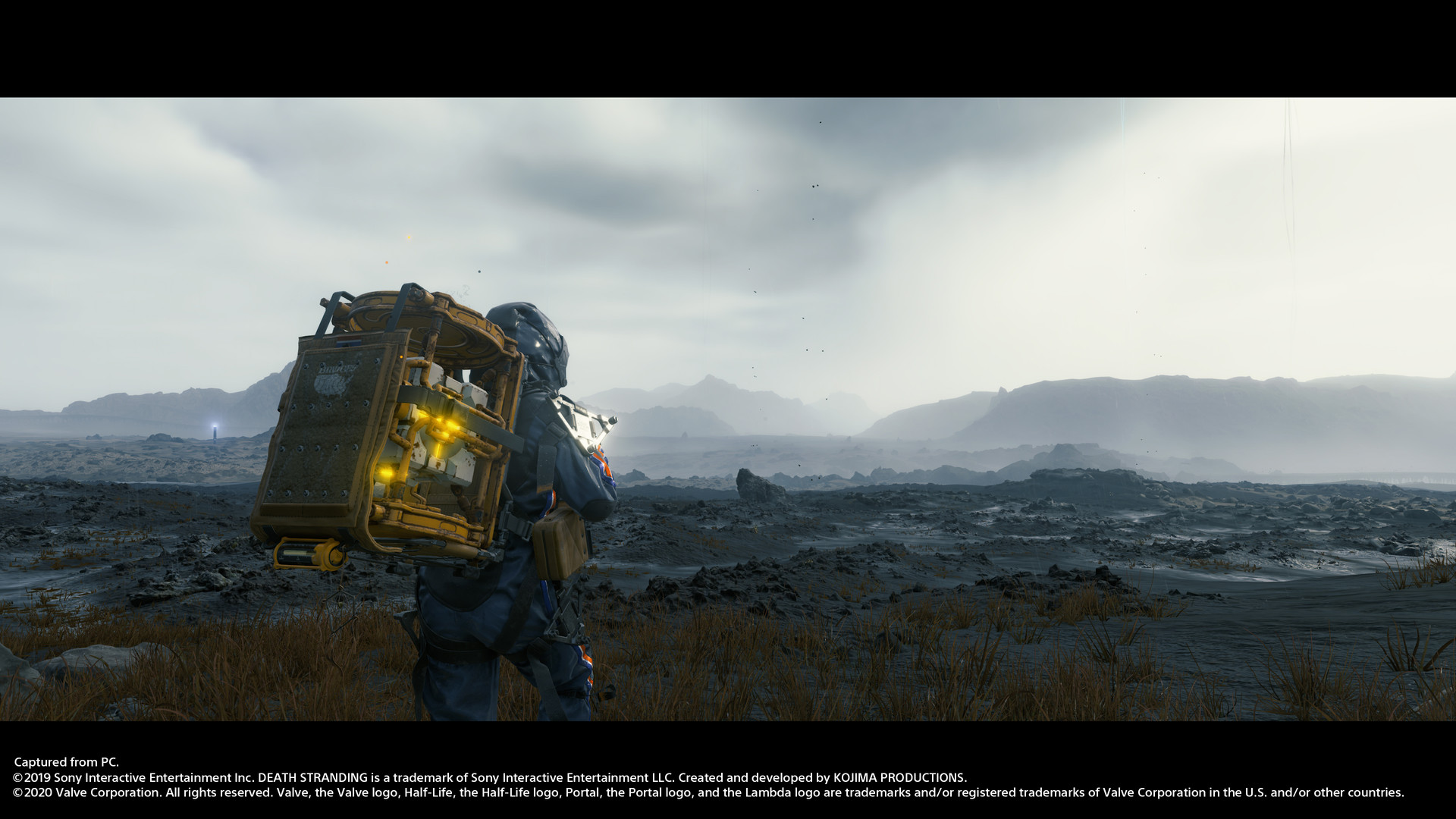
It has been less than a year since Death Stranding released on PS4 and was met with mixed feelings from players and critics alike, with some really loving it and others not being as keen on it. Nonetheless, I distanced myself from such discussions hoping the game would eventually come to PC, and now, just a few months after its initial release, Death Stranding is finally available on Steam and the Epic Games Store.
So, if you don’t tend to pay attention to what goes on outside of the PC Gaming realm, what have you been missing? Well, Death Stranding is a really tough nut to crack, and while its story, narrative and character development are undoubtedly one of its strongest points, I feel like if we were to go into specific details about it, the surprise, its magic, the sense of discovery and of experiencing everything first-hand would be ruined. It’s with that reason in mind that I’ll refrain from engaging in the discussion of any major plot points, I’ll just summarize the game’s status quo in case you’re completely unaware of what you’re getting yourself into.
In Death Stranding, you play as Sam Bridges, a porter whose sole task is to deliver much-needed items and goods to several closed cities, isolated communities and individuals in a post-apocalyptic United States of America. This post-apocalyptic state was triggered because of an event known as the Death Stranding, after which these seemingly otherworldly creatures known as BTs threatened Humanity’s very own survival. When faced with the possibility of extinction, Humanity is forced to adapt and change the way it has been so comfortable with for many years, and so the necessity of having people dedicated to transporting cargo across hundreds, possibly even thousands, of kilometres arises, and so porters come into existence and you play as one of them.
With that in mind, Death Stranding takes place in an open world, but this world comprises a couple of different regions which you’ll gain access to and explore throughout the game. Speaking of which, although the game is clearly supposed to take place in the USA, the landscape and the environments look a lot more like Iceland or Scotland, but perhaps that’s merely thanks to the cataclysmic events that have engulfed the globe and altered the local environment. Nonetheless, Death Stranding is very cutscene intensive, having at least a total of 7 hours’ worth of cutscenes. There is a lot of exposition during the first few hours, mainly done through these scenes, but once you’re past that, you’re free to explore the world.
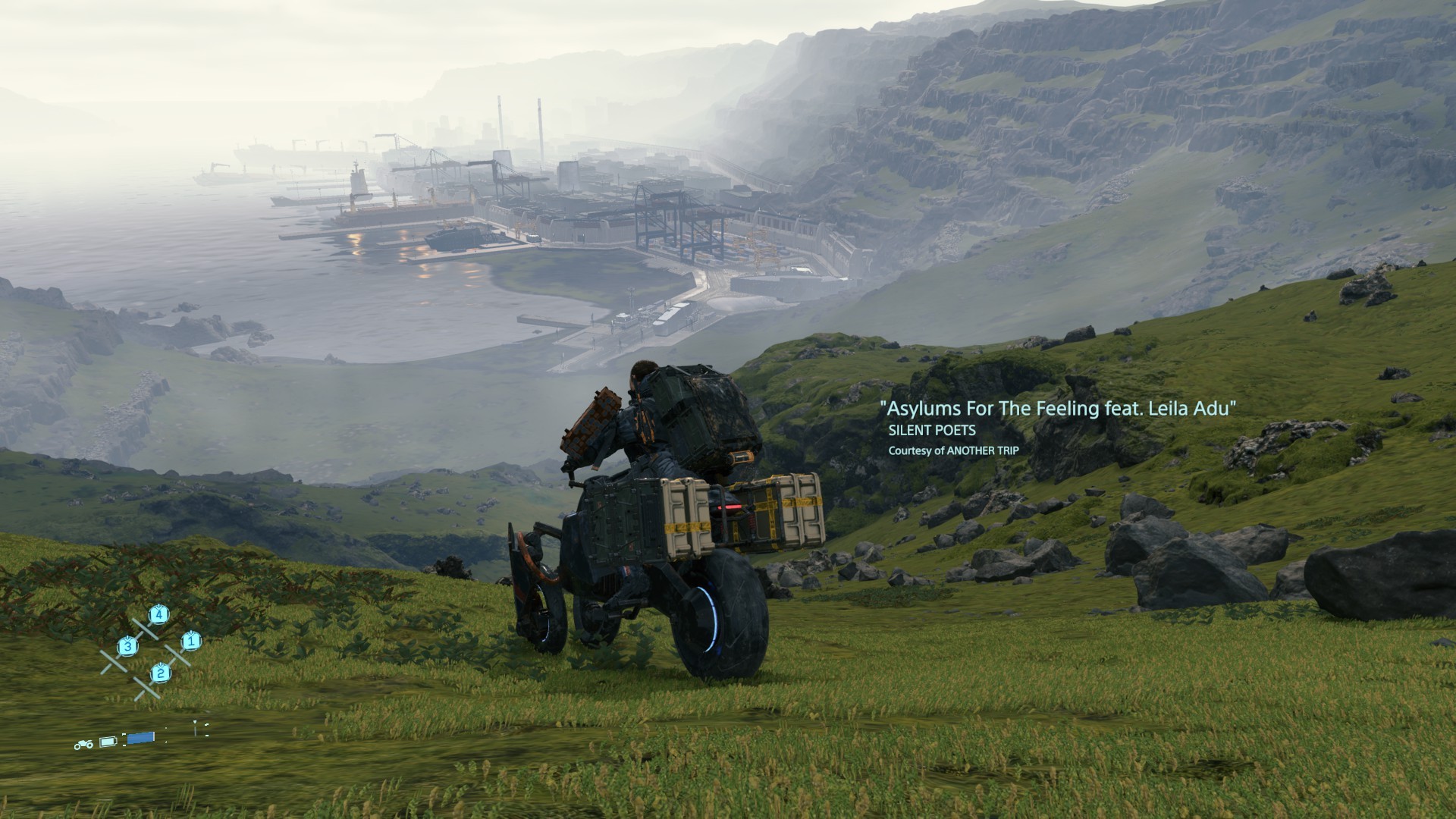
The gameplay loop of Death Stranding has been the subject of many criticisms and although a lot of them are valid, I’d urge you to not judge it before you try it. I must confess that, like many other people, when I first saw the gameplay reveal of Death Stranding I was extremely sceptical about it, I honestly thought that this would be a game which I’d find to be extraordinarily boring, but now, after completing the game, I’m glad to say that my initial thoughts couldn’t have been farther from the truth. The thing is, an entire game that’s all about delivering packages, a “FedEx simulator” as many people have jokingly called it, is a tough game to sell, so how exactly did Death Stranding manage to get away with it, and more importantly, why did the team over at Kojima Productions think that this gameplay loop would be the right one for this game? The answer to this question might surprise some people and might sound pretentious for others, but it all essentially boils down to a single keyword, CONNECTION.
First and foremost, Death Stranding is a story about forging connections and repairing broken bonds in a world where people have increasingly gotten more and more isolated, and in this sense, this might be one of Kojima’s greatest works ever. While this key aspect is explained and developed in greater detail as you progress through the story, this aspect is also intrinsic to the gameplay, in the sense that Death Stranding is a single-player game, but it’s also a Co-op experience, and this shared experience is one of its crowning achievements.
Although you will never see another player in the entire time that you’ll spend in Death Stranding, you will undoubtedly not only run into structures that were left by other players, but you’ll also run into cargo that they might have lost or got rid of during their deliveries. Obviously, the same thing will happen to others whose session ends up synching with yours, as if you place something in the world or you end up leaving some cargo lying around in the wild, other players will see it.
The array of tools that players have at their disposal to traverse the varied and challenging landscape is nothing short of fascinating. There are mundane things, such as ladders and ropes which should have pretty obvious applications, but there are also more complex structures that require bigger resource investments, such as post boxes, watchtowers, bridges and even safe houses. There are a lot more things that you’re able to craft, but I’ll spare you from being spoiled all the fun here. The post boxes are actually one of Death Stranding’s most interesting components, as these not only allow you to store items, but they also let you share items with other players and even leave cargo there so that other players can carry on and finish your deliveries for you.

As I played the game, I kept seeing familiar names pop up now and then, people who that had already gone to the places where I was headed and left ladders and bridges along the way to help those that came after them. There isn’t really any reward for players to act this way, to make the journey easier for others, but it seems that a lot of people still choose to leave their own mark in this world. For that reason, I was also compelled to leave my own mark; I felt obliged to do something to help those that would come after me just as others did. With that said, while I didn’t particularly focus on building structures throughout my journey, I focused on doing whatever I could to make sure that the vast network of roads spanning the American landscape got repaired. These roads are not free for players to place wherever they want, they have fixed locations where you can build them and once they are built, they allow players to use vehicles to traverse the land a lot quicker.
I guess that was the thing that surprised me the most about Death Stranding, the fact that it is a single-player game with deeply rooted Co-op mechanics. Additionally, not only that, but also the fact that people would go out of their own way to build things that they would probably never use. This is one of the biggest features of Death Stranding, the ability to help other players despite never seeing them, especially knowing that you won’t receive anything in return. This only bolsters the message that Death Stranding tries to convey, the fact that people have a need to connect with other people, otherwise they’ll live hopeless and senseless lives all by themselves. Furthermore, even if you are not able or willing to contribute to building structures or upgrading already existing ones so that other players’ lives become a lot easier, you can still place down signs to warn players of nearby danger, and even like things placed by other players. When I say “like”, I do mean it in the literal sense of the word that we’ve grown accustomed to in an age marked by social networks. Players can like things placed by other players, which might not only give them a little of an ego boost, but it also contributes to their overall ranking as a porter.
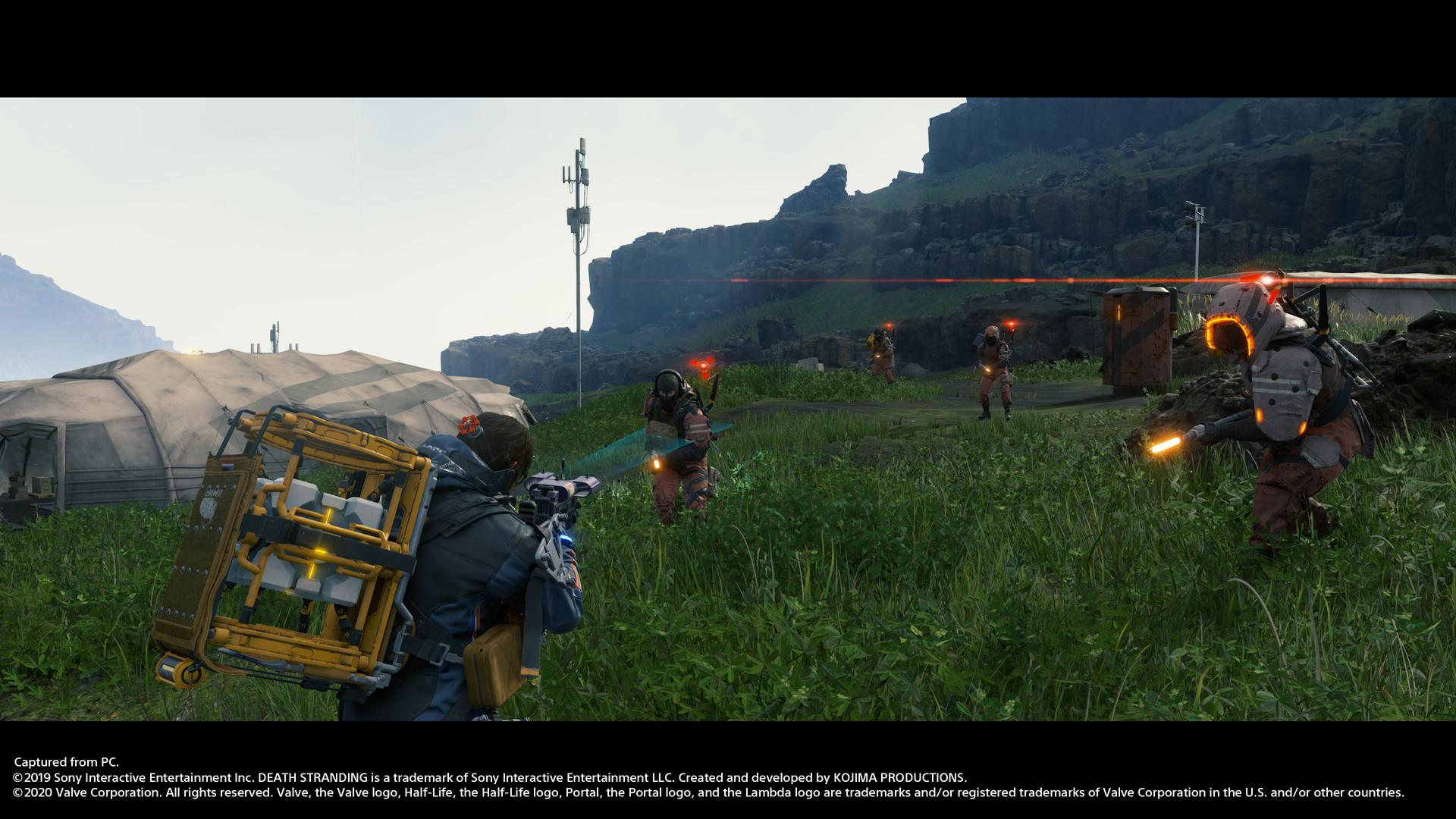
There this other element in Death Stranding which comes in the form of a ranking system, which serves to test certain parameters of each of your deliveries, such as the cargo condition, the speed of the delivery and the amount of cargo that you deliver. The higher your rank, the more people will put up orders for you, and you’ll also gain some small, but helpful, passive upgrades, such as being able to carry extra weight and more easily maintain your balance.
Balance is certainly something that must have crossed your mind if you’ve seen screenshots of players carrying towering backpacks full of cargo. Given the vast, rocky and dangerous terrain that you’ll be traversing throughout the entire game, I must say that this is a gameplay element that is exceptionally well realized. Death Stranding has this risk vs reward system for players, allowing them to take as much cargo as they can possibly carry, at the expense of speed and balance. If you fill up your backpack to its maximum capacity, you will move a lot slower than normal and you’ll also start swaying left and right as cargo starts to tilt to one side or the other. Mostly, you can counter this by simply holding on and moving slower, but doing so still has its downsides. For instance, while moving across flat terrain doesn’t really apply any penalties in these cases, you will spend a lot more stamina when traversing hazardous terrain such as rivers or climbing steep cliffs, which could eventually make you stumble and drop a lot of your cargo and damage it in the process.
As mentioned previously, Death Stranding is a very polarizing game, some people will absolutely love it for the story it tells and for the characters that you meet along your way, while others will find the gameplay to be excessively dull and repetitive, which I have to agree to some extent. I know that it’s probably a long stretch, but I’d go ahead and compare the gameplay loop of Death Stranding o games such as Euro Truck Simulator and Elite: Dangerous. These are games whose gameplay loops are extremely repetitive by nature, and while it might not be everyone’s cup of tea, many people enjoy them tremendously. With that said, thanks to the game’s movement and weight distribution mechanics, what might initially look like just a long walk still provides some engagement along the way, as you will undoubtedly struggle to keep your balance and stay on course while facing multiple obstacles and surprises along the way.
From what I understand, the encounters with BTs are not random, as they tend to stay in areas where you’ll be forced to go through to reach your next destination. Fighting these otherworldly beings might not always be the best option, as you have to figure out what might be the best approach for each scenario depending on what you’re carrying, the type of terrain and what weapons you have on you. With that in mind, the game lets you slip past these BT infested areas if you manage to play it slowly.
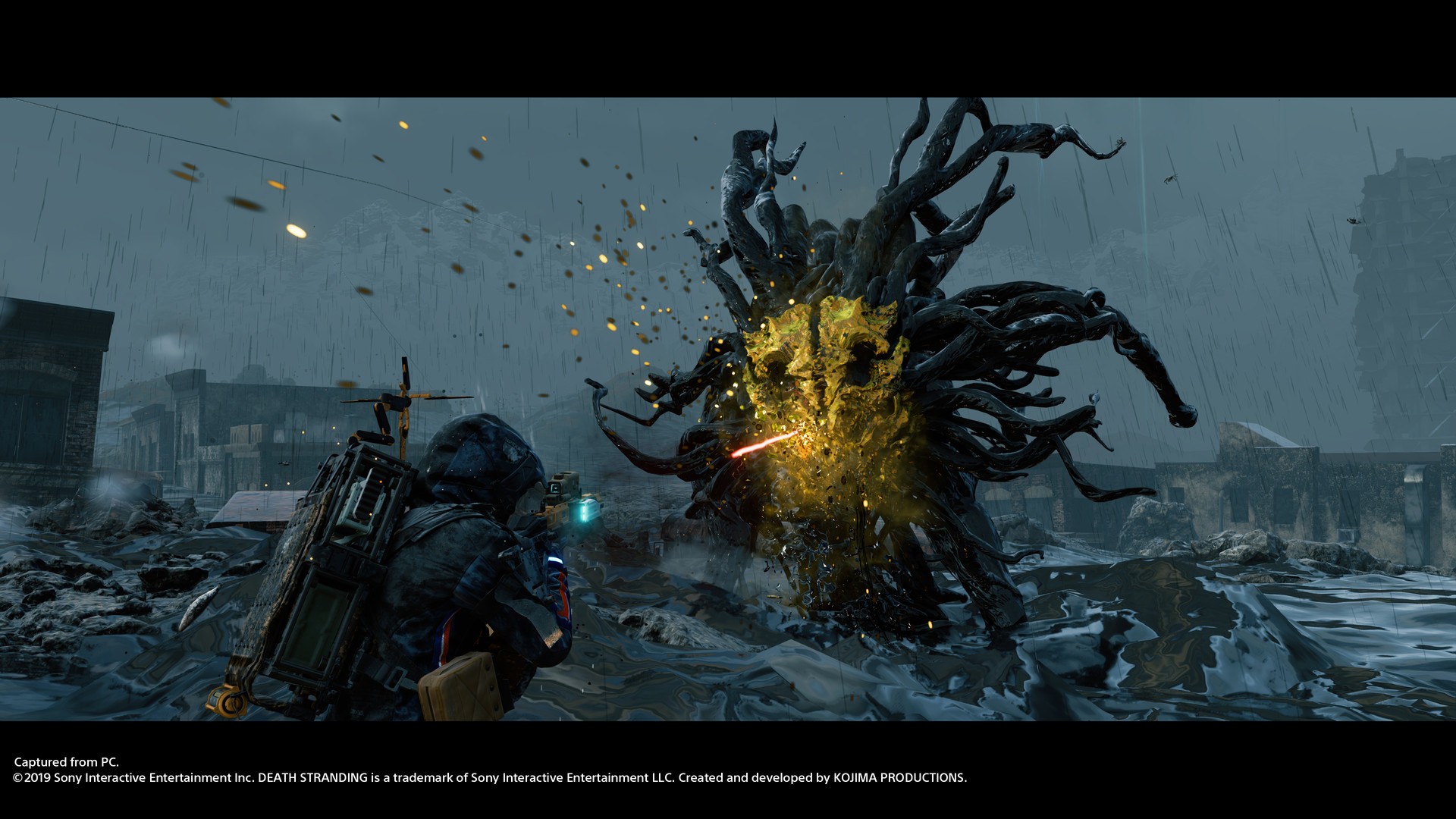
Even though the combat itself isn’t particularly challenging, at least provided that you have some weapons to defend yourself, the lead-up to it can be quite tense. Essentially, when you’re in a BT zone, your trusty scanner will immediately warn you about the nearest BT. As you slowly make your way through an area swarming with BTs, by crouch-walking, holding your breath if you come too close to one of them, your scanner will keep changing directions and beeping like crazy depending on how close you are to a BT. Now, once one of them is on to you, then all you can do is run as fast as you can before you’re dragged away by a bunch of BTs. If you don’t manage to escape this situation, you will lose some of your cargo, and then a much larger BT will spawn and hunt you down. This is where the combat really takes place, as you either manage to outrun it, which is quite difficult, or you stand your ground and you fight back. However, if you have a decent supply of weapons, you can easily kill these larger BTs without breaking a sweat. There are also human enemies, in the form of renegade porters and separatists, but these encounters are not really that interesting, as the game often just becomes just another third-person shooter.
For those that have been waiting to play Death Stranding on PC, I can safely say that you won’t be disappointed. Although the game’s graphical options aren’t that advanced, the game still ran and looked great on my 6-year-old rig. While I wasn’t able to test it personally, I’ve seen that support for NVIDIA’s DLSS 2.0 does wonders as it not only offers higher image quality, but it also boosts frame rates by quite a decent margin depending on your PC. Death Stranding was already a pretty-looking game on the PS4, so, being able to finally play this on a PC with no hardware restraints really shows the quality and what Kojima Productions can pull-off with Guerilla’s Decima Engine, and that only makes me even more curious to also finally see Horizon Zero Dawn on PC.
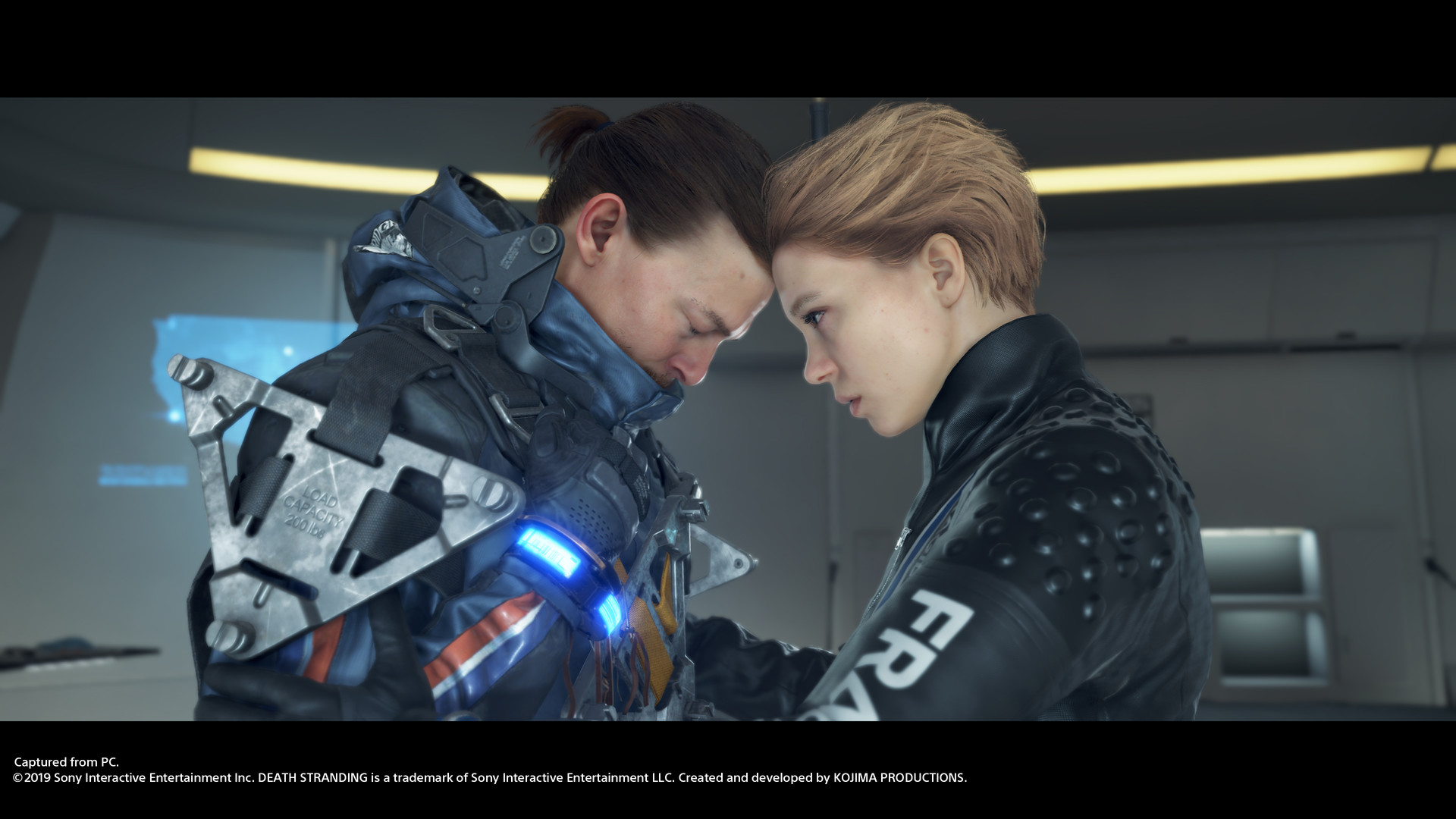
Death Stranding’s prowess is not only made possible thanks to its writing, storytelling and world building, but also thanks to its approach to cutscenes. The game uses motion capture and photogrammetry to bring its characters to life, and this results in an absolutely stellar experience. Furthermore, Death Stranding counts with a brilliant cast of actors that only enhance the lengthy exposition periods. Norman Reedus, Mads Mikkelsen, Léa Seydoux, Margaret Qualley and Troy Baker, are just a few of the names that solidify Death Stranding as something that rivals a lot of Hollywood films not only in terms of cast and length but also in terms of quality. Likewise, Death Stranding’s soundtrack is also nothing short of amazing, thanks to the work of its composer, Ludvig Forssell, but also thanks to other renowned artists such as CHVRCHES and Low Roar.
At the end of the day, even after completing Death Stranding and really enjoying it, I still have trouble recommending it to other people, as I’m sure that many people will not get the same enjoyment I got from it. The low points of the game are clearly its combat and lack of enemy variety. The game doesn’t really introduce you to that many new enemies throughout your whole journey and while some boss fights can be quite a spectacle, they’re simultaneously extremely underwhelming and some sections are just outright silly.
The main story and all the deliveries associated with it should take you somewhere between 35 to 40 hours to complete, but there are more deliveries and things that you can do before you decide to put the game down for good. Despite everything, Death Stranding was a huge surprise for me and it’s undoubtedly an enormous success story in multiple levels, as its stellar story and characters are supported in equal measure by the game’s extraordinary visuals and sound design and one of the best links in gaming history between narrative and gameplay mechanics.
REVIEW CODE: A complimentary PC code was provided to Bonus Stage for this review. Please send all review code enquiries to press@4gn.co.uk.
Subscribe to our mailing list
Get the latest game reviews, news, features, and more straight to your inbox
Thank you for subscribing to Bonus Stage.
Something went wrong.
Death Stranding Review
-
Gameplay - 8/10
8/10
-
Graphics - 8/10
8/10
-
Sound - 8/10
8/10
-
Replay Value - 8/10
8/10
Overall
Summary
Death Stranding was a huge surprise for me and it’s undoubtedly an enormous success story in multiple levels





